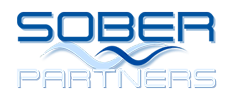LSD Addiction (Lysergic Acid Diethylmide)

LSD Dependency and Tolerance
LSD stands for Lysergic Acid Diethylmide and it is a hallucinogenic drug manufactured from lysergic acid. It its basic form, it is found on blotting paper but it’s also available as tablets. LSD is not considered as a highly addictive drug but its abuse and use over a long period of time can certainly cause some undesired effects in the user’s body. One advantage of LSD addiction is that the users can stop using it on their own and without seeking the assistance of medical experts or even a rehab center. This is unlike other addictive drugs that can only be kicked through the rehabilitation centers.
Signs of LSD Abuse
The dependency on LSD is psychological and never physical in any way. Though won’t cause any physical cravings, continued use especially in social gatherings can make stopping the use a bit difficult since it will compel the user to avoid such social gathering where it may be in use. Not many people will welcome the idea of dissociating with their friends and family simply because they want to stop using a drug. In such a situation therefore, users are likely to continue using the drug and consequently developing tolerance to it making them to want to use it more and more.
Effects of LSD Use
The effects of LSD addiction will pronounce differently on different people. This will mainly be dictated by a person’s body chemistry as well as the dosage which they took. One of the common side effects of this drug is constant mood swings. This can include feelings of euphoria, peacefulness, anxiety or even depression. When taken in large doses, the user has higher chances of experiencing hallucinations, delusions as well as changes in perception with reference to how the person perceives movements, touch, color and sound.
Withdrawal from LSD addiction
It is however comforting to note that withdrawal of LSD does not have any withdrawal symptoms hence this makes it easy for the majority to stop using it without any external assistance. In some extreme cases however, the assistance of a professional or even that of a rehabilitation center may be needed to completely kick the habit.

Break Free from LSD Addiction – Reach Out for Support Today
Begin your journey toward a life without addiction. Our expert team is ready to help you recover.

Getting Treatment for LSD Addiction
If you or someone you love is struggling with LSD addiction, seeking treatment is the first step towards recovery. The journey to overcoming addiction may seem daunting, but with the right support and care, it is absolutely achievable. At Sober Partners, we offer specialized treatment programs that focus on healing both the mind and body, addressing the unique challenges of LSD addiction.
Our comprehensive treatment plans include a combination of medically supervised detox, individual therapy, group counseling, and aftercare to ensure that you have the support you need throughout your recovery. Whether you need help managing withdrawal symptoms or addressing the psychological triggers of addiction, our experienced team is here to guide you every step of the way.
Don’t wait to get the help you need. Reach out today to learn more about our LSD addiction treatment options and begin your journey toward a healthier, drug-free life with Sober Partners.
